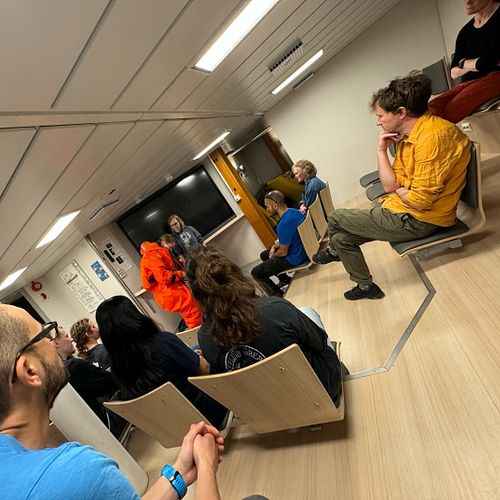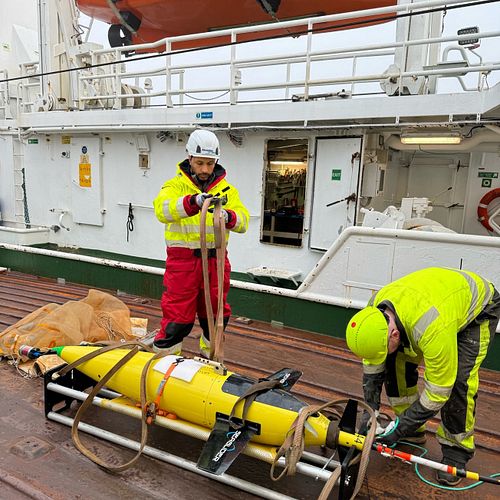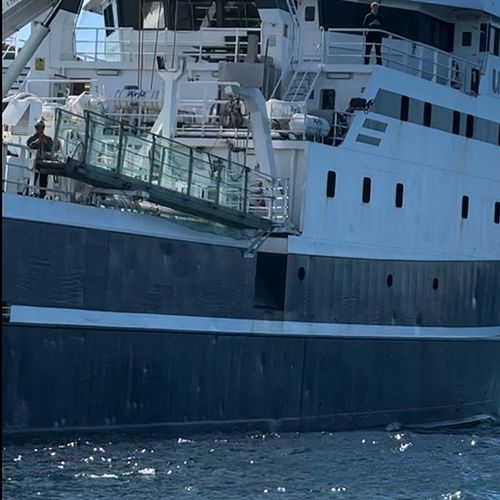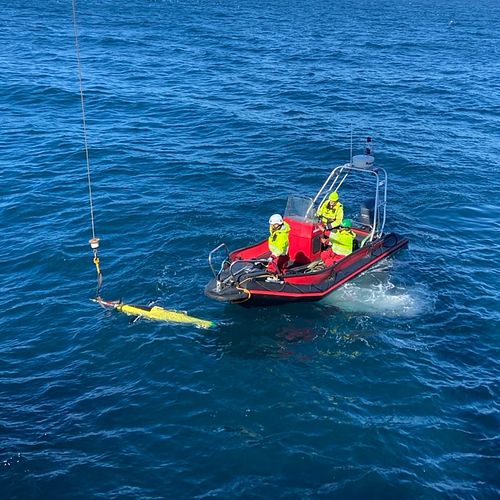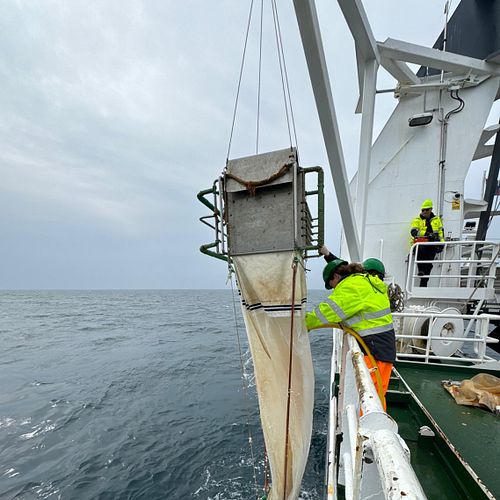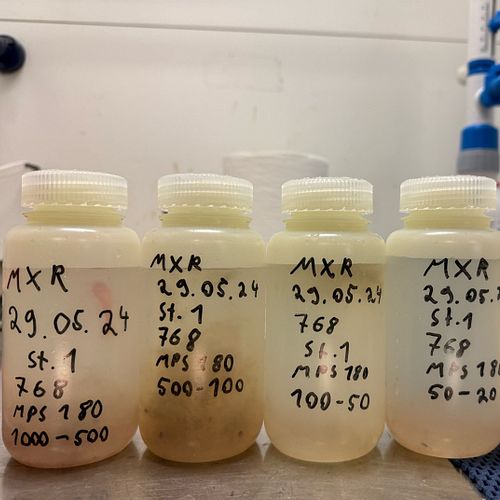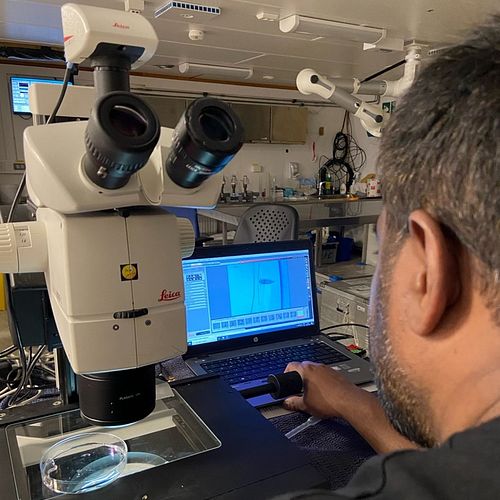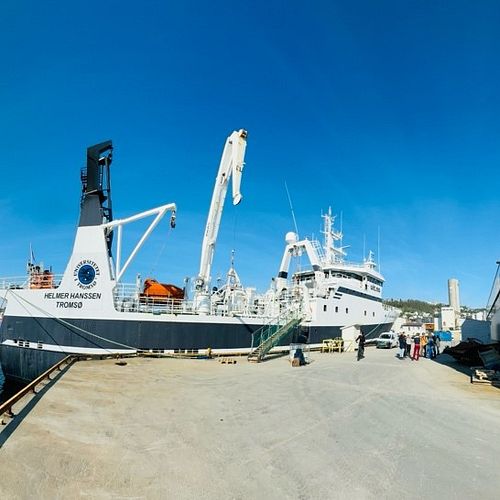3. juni 2024 nyhet
Written by Chathumini Kiel
We all migrate, at some stages of life, for different reasons, and so do the tiniest organisms who we may or may not see with an unaided eye. This is a story about the migration of a group of tiny zooplankton who live in the ocean. Individual zooplankton migrates tens to hundreds of meters vertically across the water column in search of better resources (e.g., food) while avoiding risks (e.g., predators) which we call vertical migration. These vertical migrations of zooplankton are considered the ‘largest synchronized animal migration of our planet’. In the Lofoten-Vesterålen (LoVe) region of the Norwegian Sea, a tiny marine copepod, termed Calanus finmarchicus undergoes two forms of vertical migrations. The first is the diel vertical migration (DVM) where C. finmarchicus migrates up and down the upper water column daily. The second is the seasonal vertical migration (SVM) where it migrates across thousands of meters seasonally. These two migrations are at least partly driven by environmental conditions, such as light, temperature, food availability and the presence of predators (e.g., zooplankton-eating fish).
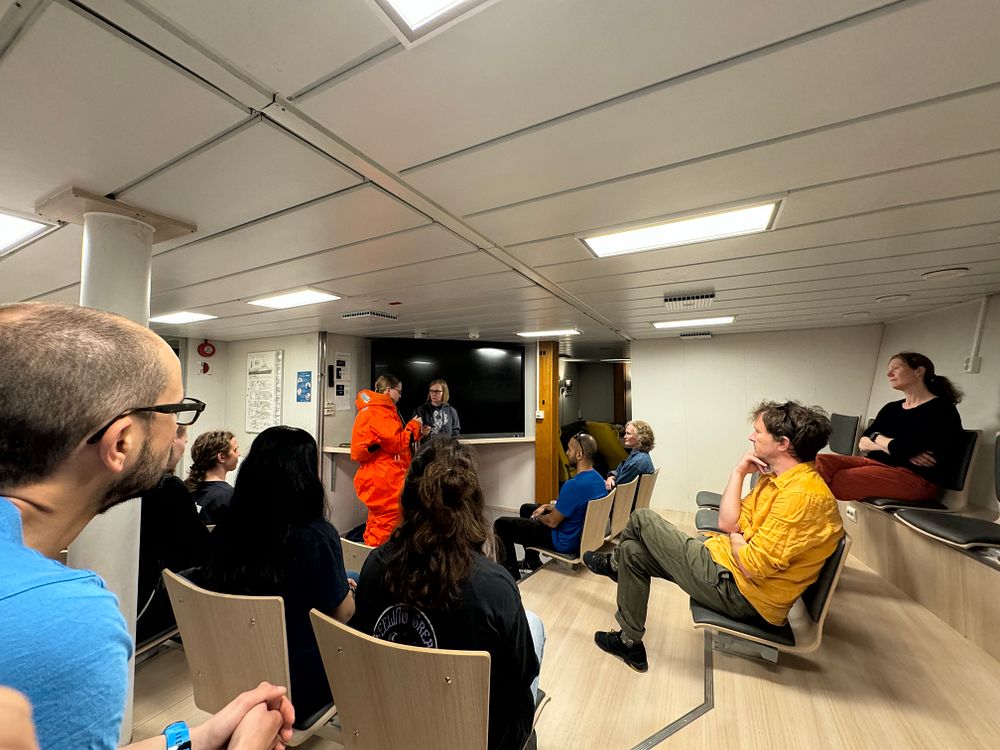
The safety briefing onboard by the cruise leader, Sünnje Basedow (UiT). (Photo: Kanchana Bandara/Akvaplan-niva)
An uncertain future
The global climate is changing, at a higher rate than we could imagine, and the hammer stroke of climate change is predicted to fall the hardest in higher latitudes where the Norwegian Sea is not an exception. Climate change leads to changes in the environmental conditions that are driving these tiny C. finmarchicusvertical migrations. Do you think their migrations would be hindered by this? In January 2024, the project ‘Migratory Crossroads’ was launched to investigate how these migrations would be impacted by climate change.
Deciphering the impacts of climate change on vertical migrations requires predictions of future environmental conditions and how C. finmarchicus behavior can adapt to those. Therefore, at the core of Migratory Crossroads is a model of C. finmarchicus that can mimic their behavior under future environmental conditions. This model is named the ‘Pan-Arctic behavioral and life-history simulator for Calanus’ (PASCal: https://github.com/Kanchana-Bandara/PASCAL-v4.0), which operates in 3-dimensional (3D) space(latitudes, longitudes, and depth) and time. To be confident in the model-predictions of the future, PASCAL model needs to be calibrated (validated) with field data to represent the present-day environmental and behavioral scenarios. In this regard, the Migratory Crossroads field program was initialized on May 13.
Double-headed data collection
This field program, led by Professor Sünnje Basedow of UiT – The Arctic University of Norway, is double-headed with: (i) a shipboard survey for sampling C. finmarchicus populations and collecting environmental data and (ii) an autonomous survey for in-situ observation of C. finmarchicuspopulations. Together, these shipboard and autonomous aspects provide a broader coverage of data in space, time and biological aspects that will be very useful in calibrating the PASCal model.

Ehsan Abdi (Akvaplan niva) preparing the Seaglider M1 for deployment with the help of a Helmer Hanssen technician. (Photo: Kanchana Bandara/Akvaplan-niva).
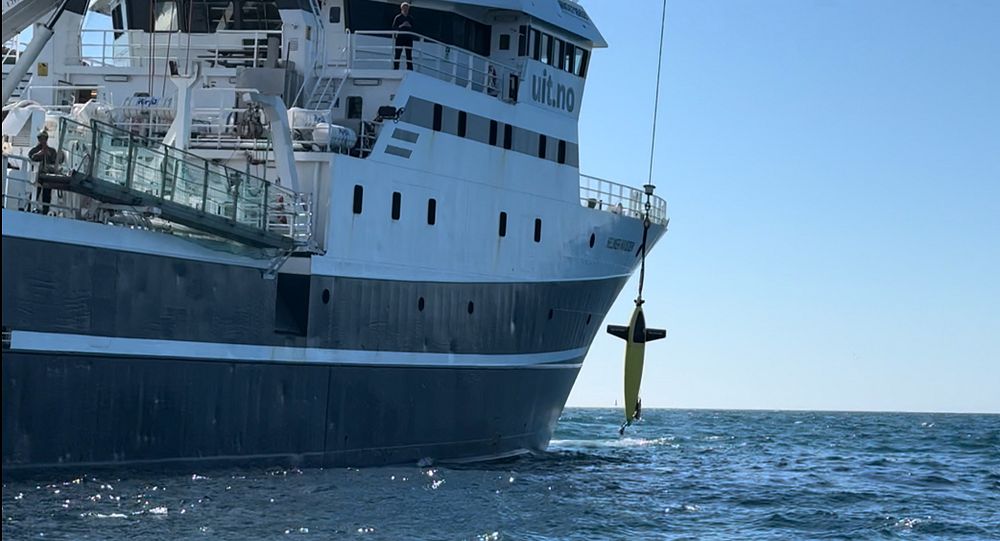
The Seaglider M1 equipped with an echosounder and the plankton imager UVP6 deployed from the R/V Helmer Hanssen on 30 May 2024. (Photo: Kanchana Bandara/Akvaplan-niva).

The Seaglider M1 in the water. (Photo: Pierre Priou/Akvaplan-niva).
During the shipboard survey (29 May – 3 June) several coastal, offshore, and shelf-break stations were sampled using different plankton nets (MultiNet, WP2 net, Tucker trawl) designed to capture medium (0.2 – 2 mm) and large (> 2mm) sized zooplankton, including C. finmarchicus. Further, a pelagic trawl was deployed to capture potential predators of C. finmarchicus, such as Norwegian spring-spawning herring, Northeast Arctic cod, haddock, and saithe. In addition to the nets, a shipboard echosounder was sending and receiving underwater acoustic signals for detecting and quantifying groups of zooplankton and fish. On the ship, environmental data were collected using a CTD (conductivity, temperature, depth device) with extra sensors for measuring the phytoplankton Chlorophyll-a biomass.
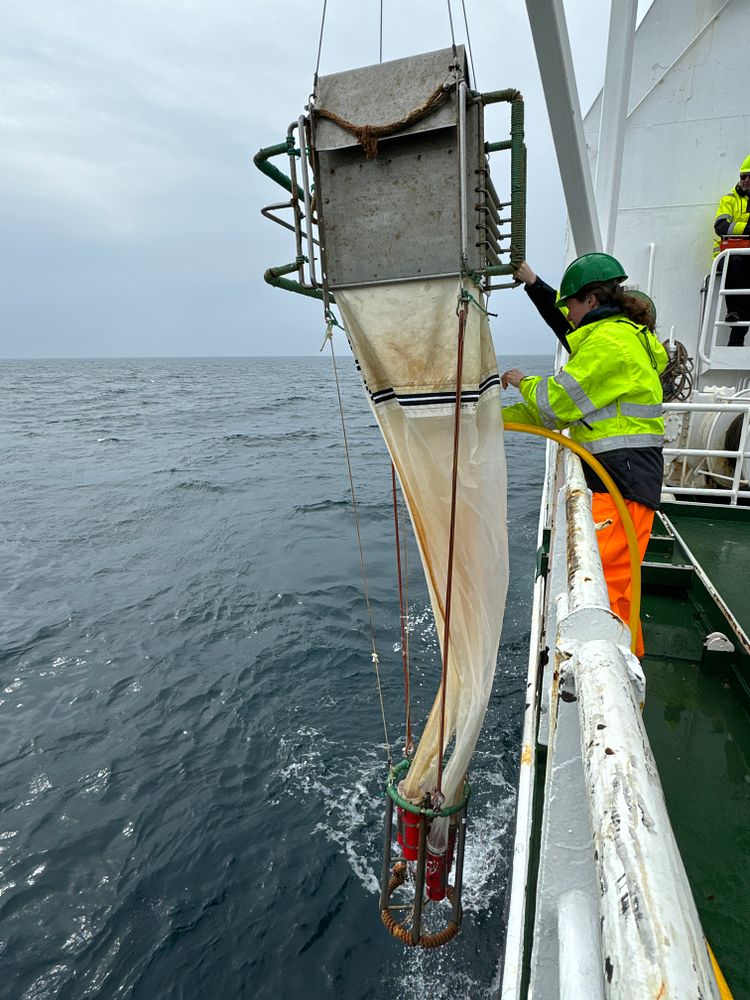
Elisabeth Halvorsen (UiT) recovering the MultiNet-midi, which can collect C. finmarchicus and other zooplankton from up to five different depth layers. (Photo: Chathumini Kiel).
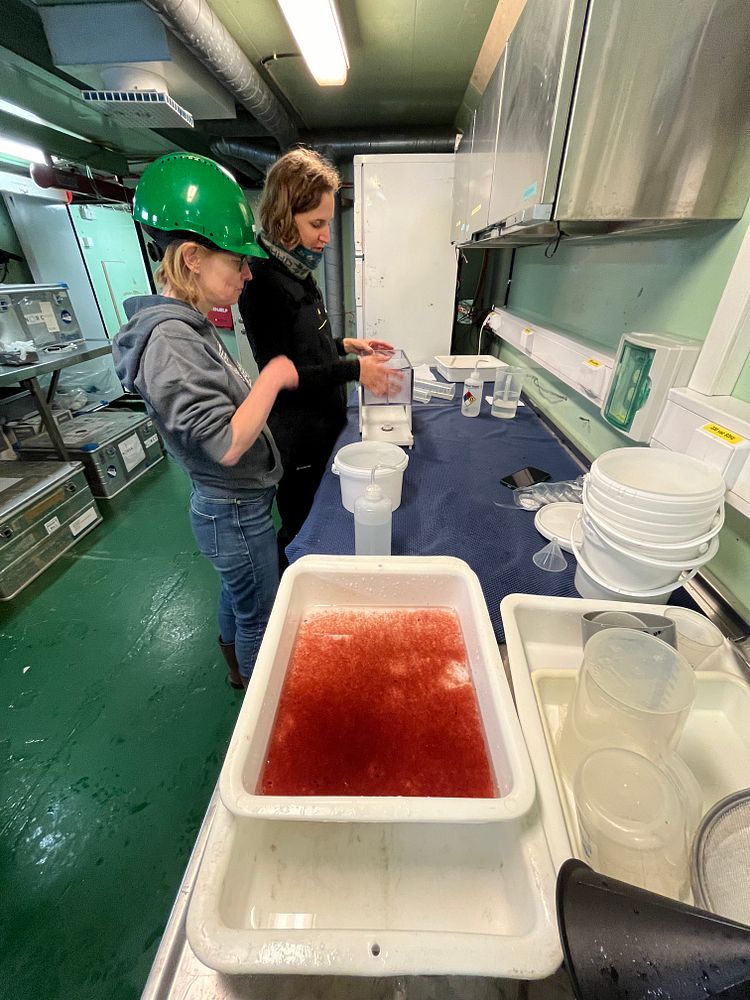
Harvested Calanus (Photo: Pierre Priou/Akvaplan-niva).
The autonomous survey has been running since 13 May and will continue for two months. Two autonomous vehicles were used here. The autonomous surface vehicle ‘Sailbuoy’ (Offshore Sensing AS) with sensors for environmental data collection (light, temperature, salinity) and acoustic observation of zooplankton communities, including C. finmarchicus. While the Sailbouy is monitoring from the sea surface, an autonomous underwater vehicle Seaglider M1 (Kongsberg) is profiling the water column for zooplankton and environment (light, temperature, salinity). The Seaglider M1 has optical (UVP6, Hydroptic) and acoustic (EK80, Kongsberg) zooplankton detecting sensors and was deployed in the LoVe region on 30 May.
Data-driven model
Together, the autonomous survey and the shipboard survey produce data on the vertical & horizontal distributions of C. finmarchicus, their daily migration patterns along with the abundance, development stage structure, body size (length and mass), and state of lipid storage. With data on temperature, light, salinity, phytoplankton biomass (= food for C. finmarchicus), and predator distributions (= zooplankton-eating fish) at hand, the above biological and ecological observations can be linked to their environment. Such behavior-environment correlations are essential in calibrating the PASCal model. In the late-Autumn 2024, the calibrated PASCalmodel will be executed for the duration and spatial extent of the Migratory Crossroads field campaign to compare simulation results against the double-headed survey findings.
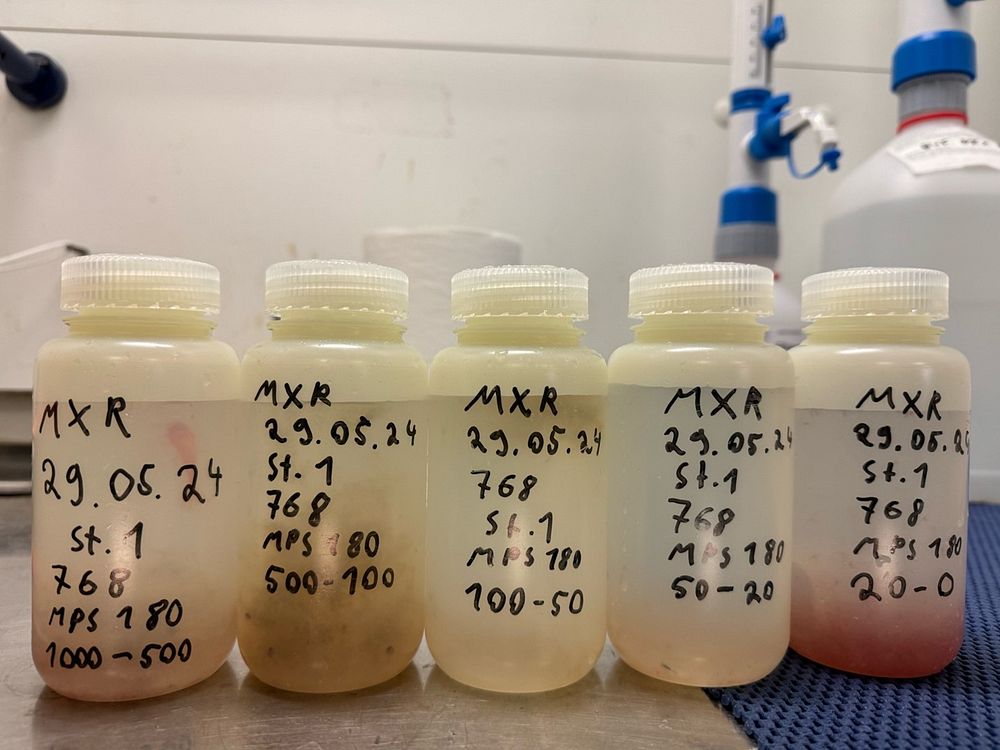
Dense near-surface (0-20 m) aggregations of C. finmarchicus sampled by the MultiNet-midi. The red pigmentation of C. finmarchicus is visible in the 20-0 sample bottle. (Photo: Kanchana Bandara)
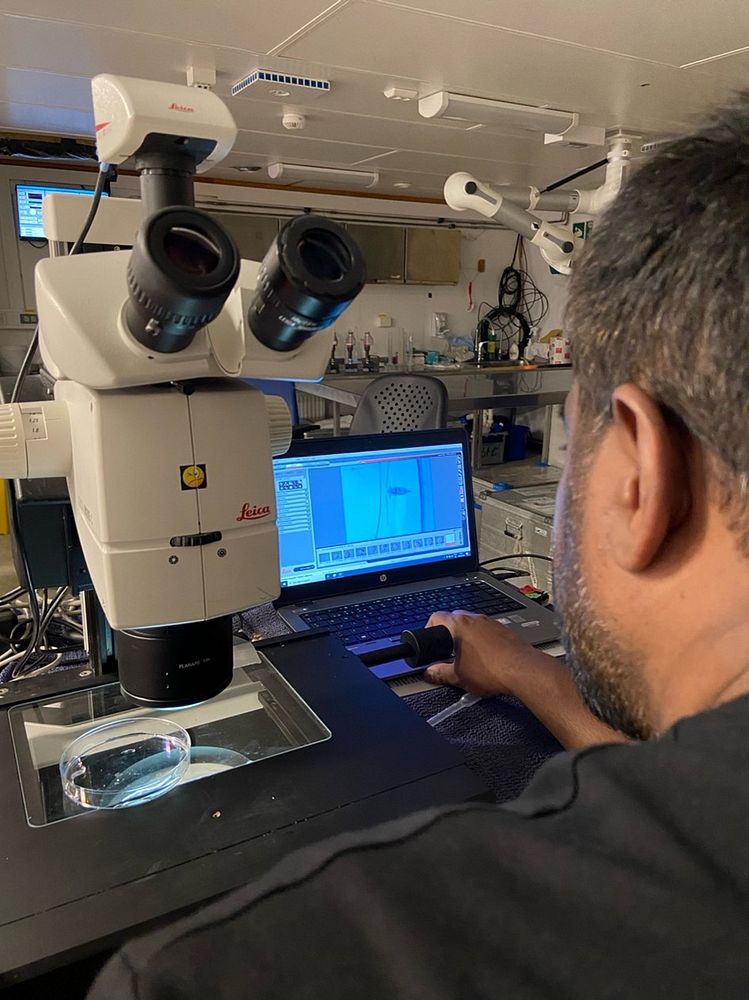
Kanchana Bandara (Akvaplan niva) taking microscopy images of C. finmarchicus for body size and lipid storage estimations. (Photo: Chathumini Kiel).
Migratory Crossroads is led by Kanchana Bandara (Akvaplan niva) with the participation of 14 project members from UiT, NIVA, NINA (Norway), DTU (Denmark) and SCRIPPS, UCSD (USA). In addition, researchers from NORCE (Norway), AWI (Germany), IOPAN (Poland) and master students from UiT (Norway), Université libre de Bruxelles and Ghent University (Belgium) attended the shipboard survey and contributed to the data collection.


